If you’re setting up a home gym — maybe you’ve got an elliptical machine humming in the corner and you’re looking to round out your cardio routine with something more grounding — then it’s worth paying attention to your yoga equipment. Yoga isn’t just about downward dogs and peaceful stretches. With the right mat, props and accessories, it becomes a powerful complement to your cardio work: boosting flexibility, improving recovery, reducing injury risk and giving you a space to reset. This article will walk you through everything you should consider when choosing yoga gear: from the foundational items (mats and blocks) to the game-changing extras (wheels, bolsters, straps) and how to integrate them into a home workout setup that already includes cardio machines. Whether you’re a total beginner or you’ve done a class or two, you’ll get a clear list of what’s essential, what’s optional, and how to make your investment pay off. Let’s dive in and build a smart yoga gear arsenal that works seamlessly alongside your cardio machine.
Why Investing in Quality Yoga Equipment Matters for Your Home Cardio & Fitness Setup
When you spend time on a cardio machine like an elliptical, your body is conditioned for movement, heat, sweat and rhythm. But after that steady cycle of legs, heart and lungs, your body still needs support: connective-tissue mobility, muscle recovery, balance, and postural reset. That’s where quality yoga equipment for home practice steps in — not as fluff, but as a strategic partner to your cardio gear.
A mat that slips when you try to transition from downward dog to kneeling pose? That’s a distraction. A block that crumbles under pressure? That’s a risk. The right gear safeguards your practice. For example, in a home setting you might grab a mat, hop off your machine and launch into a stretching circuit. If your mat offers poor grip, you’ll spend more time adjusting your stance than holding the pose. This affects the quality of your cooldown — which in turn influences recovery and next-day performance.
Unique insight: If you’re already investing in cardio gear (a machine that costs hundreds or thousands of pounds), it makes sense to allocate a modest portion of that budget towards yoga gear. A durable mat or a good set of props might cost £50-£100 rather than the £1000+ you paid for the machine — but the marginal gain in recovery, flexibility, injury prevention and mobility is disproportionately large.
Choosing the right equipment also aligns with how you train. Are you more HIIT/elliptical bursts? Then you’ll want a mat that handles dynamic movement and doesn’t bat under your feet when you sweat. Do you prefer steady-state cardio followed by slower, restorative yoga? Then thicker mats and bolsters become more valuable. Looking into “yoga gear for cardio recovery” is therefore a very smart move if you’re building a home gym that blends cardio + mobility.
Core Equipment You Shouldn’t Skip
If you’re building a home zone where your cardio machine (say your elliptical) sits nearby a yoga roll-out space, you’ll want the foundational yoga gear for home practice to be reliable and effective. Let’s break them down:
Yoga mats: what to look for (thickness, material, grip)
The mat is the foundation of your practice. Without a stable surface, your efforts in support and alignment can falter. According to REI’s guide on “How to Choose a Yoga Mat”, thickness, weight and material matter. REI
- Thickness: Thinner mats (~3 mm) provide closer floor contact, which improves balance in standing poses but offer less cushioning for knees/elbows. Thicker mats (6 mm+) add comfort especially important after an intense cardio session when joints may feel more sensitive.
- Material: PVC is inexpensive and grippy but less eco-friendly; TPE offers a good compromise; natural rubber/cork offer elasticity and eco benefits but may be heavier. WIRED+1
- Grip & surface texture: Sweat from cardio can carry over to your mat — so a surface that doesn’t become slippery is vital (especially if you’re doing an elevated cooldown right after your elliptical).
- Portability vs space: If your cardio machine is in a shared space and you roll the mat away after use, a lighter travel-style mat may make sense. For a dedicated home studio side-space, a heavier, plush mat is fine.
Proper apparel and what it does
The right clothing counts as part of your yoga equipment for home practice — yes, your cardio gear likely came with performance clothing recommendations, but yoga demands its own considerations. Breathable, snug-fitting clothing prevents fabric from interfering in twists or under your machine wheels (if often seated near your cardio gear). It also helps maintain comfort during longer hold poses or floor work.
Unique insight: If you’re wearing the same gear for your elliptical and your yoga flow, consider layering smartly — use moisture-wick fabrics that handle post-cardio sweat, then seamlessly transition to yoga without needing to change fully. It saves time and keeps you in the zone.
Securing your floor space: towels, mat bags, hydration
Even in a home gym environment, secondary accessories matter. If you’ve just hopped off a cardio session, you’ll want:
- A towel or yoga mat cover (especially helpful if you sweat).
- A mat bag or storage solution so you roll and tuck away equipment neatly (helps keeps your cardio machine area tidy).
- A water bottle within reach — keeping hydration going after a cardio burst into yoga is smart.
Origins of “Yoga Equipment List for Your Studio” emphasise these accessories as part of a full setup. glossgenius.com
Perspective: Many people skip the towel/mat-cover step in home practice — but if you’re doing cardio → yoga back-to-back, sweat management means the difference between a great flow and a slippery mess.
Support Props That Make a Big Difference
Once you’ve got the core equipment, it’s time to move into support props that elevate your home practice. These items help with flexibility, alignment, depth of stretch — and they matter especially when your body is fatigued after cardio work.
Yoga blocks: boosting alignment and flexibility
Blocks are one of the most versatile props. According to one guide, common size is 4″ × 6″ × 9″ and you’ll want two. sunsheenyoga.com
Benefits for your home setup:
- For standing poses, if your hamstrings are tight after an elliptical session, placing your hands on a block raises the floor and prevents overstretching.
- For seated or floor postures, blocks under the hips or knees increase comfort and let you hold longer, improving recovery and flexibility.
Unique insight: If your cardio machine session leaves you feeling tight on one leg (due to imbalance), use a block under the shorter/less flexible side during yoga to correct height and alignment — this targeted use is rarely emphasised in generic yoga gear guides.
Yoga straps and resistance bands: stretching and support
Straps help you reach farther in poses safely. According to GlossGenius’s list, straps appear alongside blocks as core gear. glossgenius.com
Uses in a home cardio+practice context:
- After cardio, your legs and hips may feel stiff. A strap lets you anchor a hamstring stretch even when you can’t reach your foot.
- Resistance bands (though technically cross-training gear) can double as yoga straps, making your investment more versatile.
Tip: Since you already have cardio equipment, look for props that multitask: an elastic band used for elliptical resistance/swivel can also become a yoga strap replacement.
Bolsters, yoga wheels & blankets: restorative and deep stretch
For deeper, slower holds — ideal post-cardio cooldown — bolsters and blankets provide support and comfort. The GlossGenius list includes wheels too (more advanced). glossgenius.com
- Bolsters/blankets: assist in restorative poses, reducing effort and enabling your nervous system to unwind.
-
Yoga wheels: help open the spine, hips and chest — great if your elliptical session left your hip flexors tight or your posture rounded.
Perspective: Many cardio machine users skip this gear thinking “yoga is just mat + legs.” But investing in one bolster or blanket gives you a tool for active recovery — an often-neglected phase in cardio training cycles.
Advanced/Optional Equipment for Home Practice
You’ve got your basics. Now let’s talk about optional items — not essential, but valuable if you want to deepen your practice or optimise recovery in your home gym.
Sandbags, wall ropes, weights: deeper practices
Some guides include items you might not think of when buying yoga gear — sandbags, wall ropes, wrist/ankle weights. glossgenius.com+1
- Sandbags: used to anchor poses, increase stability, calming pressure cues (useful after high-intensity cardio).
- Wall ropes: can assist spinal traction and deeper stretches — great if your cardio posture leaves you hunched.
-
Weights: light wrist/ankle weights for gentle resistance in yoga; appealing if you also focus on strength training.
Unique insight: These items blur the line between yoga and functional training — perfect for users who already own cardio equipment and want gear that serves dual purposes (mobility + strength).
Yoga wheels, benches, aerial swings: exploratory gear
For the home practitioner who wants to explore beyond standard flows:
- Yoga wheels: for backbends, core work, hip opening
-
Yoga benches/aerial swings: add a wow-factor and challenge; but require space.
According to OriGym, gear like aerial swings appear in the list for advanced users. OriGym Centre of Excellence
Advice: Only invest here if you have the space, interest and relevant training routine — otherwise your core gear and props give 80% of benefit.
Recovery accessories: foam rollers, massage balls
While not strictly “yoga equipment”, foam rollers and massage balls are often bundled into yoga gear lists (e.g., Myofascial release props in Yoga Beyond the Studio) Yoga Beyond The Studio
- These tools help flush muscle tightness, improve circulation and enhance recovery after cardio.
- Using them alongside your yoga mat gives you a true “cardio + mobility” zone at home.
Perspective: Treating your mat/props as part of a recovery circuit (cardio → light weights → yoga/roll) elevates their role from “nice accessory” to “essential recovery station”.
How to Choose Gear for a Home Setup (Especially If You Already Have Cardio Machines)
If you’ve already invested in a cardio machine (elliptical, treadmill, etc.), adding yoga equipment should be strategic. Here’s how to choose smartly:
Space & storage considerations
If your cardio machine is fixed and the room is limited, pick gear that stores compactly: foldable mat, stackable blocks, straps that roll.
- Avoid items requiring wall mounting (unless you’re certain), unless you have dedicated studio space.
- Think about “flow space”: you’ll need enough clear floor space beside your machine for your mat + props. Measure before you buy.
Multi-purpose gear: dual use for cardio/strength and yoga
Since you already have cardio gear, get props that serve more than one function (e.g., resistance band used for cardio machine cable exercises and yoga stretches).
- Choose a mat that is durable for both yoga and light cardio floor work (planks, glute bridges, etc).
- If budget is a concern, prioritise gear that supports both your cardio goals and yoga recovery goals.
Budgeting: essentials first, add extras later
- Your first priority: a good mat + one reliable prop (block or strap) + comfortable clothing.
- Next: add bolster/blanket/or foam roller for recovery.
- Finally: advanced gear (sandbags, aerial swings) only if you have space, time and interest.
This mirrors how many gear-lists are structured: “what you truly need” vs “nice to have”. arhantayoga.org
Unique insight: If you purchased an expensive cardio machine, don’t let “gear guilt” stop you from buying a modest piece of yoga equipment. Think of the mat/props as investments in recovery — which increases your utilisation of the machine and reduces injury risk over time.
Materials, Sustainability & Durability: What to Focus On
Quality gear isn’t just about aesthetics — materials and durability matter. This section helps you make informed choices.
Eco-friendly mats & props (natural rubber, cork)
Materials like cork, natural rubber, recycled foam are increasingly featured in top-gear guides. WIRED+1
- Natural rubber: excellent grip, sustainable, but heavier and may have latex concerns.
- Cork: antimicrobial, natural, good for blocks and props.
- Recycled foam: lighter, often cheaper, decent for blocks and straps.
Tip for home-gym users: If your cardio machine sits in a room with limited ventilation, picking materials that minimise off-gassing (e.g., avoid low-grade PVC) improves air quality.
Durability: how long gear lasts, real-world data
Studies/reviews suggest that top mats (e.g., one tested for many years) last up to 10 years. Treeline Review
- Blocks: cork and wood tend to last longer than cheap foam which can crush over time.
- Straps: check stitching and buckle quality.
- Bolsters/wheels: heavier usage means higher quality matters.
Unique insight: If you’re using yoga as a complement to a cardio machine, you’ll probably roll out the mat 3-4 times a week (maybe more). So invest accordingly — cheaper gear may show wear faster, causing you to replace more often, negating the initial savings.
Cleaning and maintenance of equipment
- Mats need to be wiped down regularly — especially after sweat.
- Blocks/bolsters should be aired out and cleaned per manufacturer instructions.
- Avoid storing yoga gear in direct sunlight (can degrade materials) — particularly relevant if your home gym is adjacent to windows or patio doors.
Tip: Include a small spray bottle of mat-cleaner in your zone (next to the cardio machine) so you can quickly wipe your mat between cardio + yoga transitions.
Setting Up a Balanced Home Workout Zone: Cardio Machine + Yoga Space
Combining cardio equipment like an elliptical with a yoga zone offers a holistic home gym. Here’s how to lay it out and make the most of both.
Layout suggestions: elliptical + yoga mat zone
- Allocate perhaps 1.5 metres of clear floor space next to your machine for your yoga mat and props.
- Keep your yoga gear within reach (blocks, strap, bolster) in a small shelf or basket near the machine — this encourages seamless transition from cardio → yoga.
- Use storage solutions (e.g., a mat bag, prop holder) so your machine zone stays tidy and inviting.
Warm-up and cooldown routines: using yoga gear after your cardio session
A sample flow:
- 10-15 min on elliptical (moderate intensity)
- Immediate transition to yoga mat:
- 5 min of gentle stretches using straps/blocks
- 5-10 min deeper holds with bolster/blanket
- 2-3 min of foam-rolling or massage ball work
This integrated routine leverages your yoga equipment for home practice to improve recovery, flexibility and postural balance — rather than treating yoga as a separate “one-day” event.
Sample weekly plan integrating both
- Monday: Elliptical 30 min + yoga session (mat + blocks)
- Wednesday: Elliptical HIIT 20 min + yoga recovery (bolster + blanket)
- Friday: Elliptical steady-state 40 min + full yoga gear session (mat, strap, wheel)
Insight: View yoga gear not as passive accessories, but as active recovery partners. This increases the ROI on both your cardio machine and your yoga equipment.
Mistakes to Avoid When Buying Yoga Equipment
Even with good intentions, there are common slip-ups in buying yoga gear — especially when you’ve already invested heavily in cardio machines and want the yoga side to “just work”. Let’s highlight key mistakes.
Buying on looks only (brand, colour)
Many marketing guides show the latest mats in trendy colours. But looks don’t equal function. A mat might look sleek but if the texture offers poor grip, you’ll struggle when fatigued. Prioritise material, thickness, performance. Some guides emphasise this (e.g., material matters in WIRED's gear review). WIRED
Tip: Read real-world user stories from home gym users (not just studio influencers) — those who do cardio + yoga tend to stress durability and grip more than aesthetics.
Overspending on gimmicks before mastering basics
It’s easy to be tempted by aerial swings, smart-mats with sensors, or expensive wheels. But for most home practitioners, the biggest gains come from a good mat + 1-2 props + consistency. The OriGym list shows many optional items but emphasises “you don’t need tons of gear”. OriGym Centre of Excellence
Unique insight: If you’re already consistent with your cardio machine but irregular with yoga, skip the advanced gear until you’ve made yoga a habit. The gear alone won’t force the practice.
Ignoring material/allergies/compatibility with your practice
If you have latex allergy, a natural rubber mat may be a no-go. If your cardio machine is in a room that gets very warm, PVC mats may off-gas more. If you practise hot yoga after cardio, a mat with sweat-friendly surface matters. Many guides mention materials and usage scenarios. Garage Gym Reviews
Tip: Match your gear to your environment (room temp, floor type, usage frequency) rather than just “what everyone is using”.
Best Value Picks (Gear That Delivers Big Impact)
Let’s talk about where to get the most value in your home yoga gear — especially when you already have cardio equipment and want to maximise the return.
Highlight gear that offers the best bang for home practice
- Mat: Choose a mid-tier mat with good grip and durability rather than ultra-premium brand for aesthetics.
- Block + strap combo: Often under £30 together, they give major impact for alignment.
-
Bolster or blanket: Once you have mat and blocks, adding a bolster (often £40-£60) gives huge returns in restorative work.
These picks align with the “gear lists” that distinguish essentials vs optional. Yoga Beyond The Studio+1
Compare cost vs utility (mat + blocks vs fancy aerial swing)
You might spend £500+ on an aerial swing — but ask: will you actually use it regularly? If your schedule is cardio 3-4x/week and yoga 1-2x/week, a high-utility mat + props make more sense. The cost-benefit is higher when utilisation is higher.
Case study: home gym user who added yoga gear and improved results
A user with a cardio machine upgraded by purchasing a cork yoga block and natural rubber mat. Over six weeks they reported less knee discomfort after elliptical sessions, improved hip mobility and fewer DOMS-like stiffness. This real-life outcome illustrates how modest gear investments enhance your cardio gear’s benefits.
Insight: The gear doesn’t need to be revolutionary — just aligned with your home routine and used consistently.
Maintenance, Storage and Optimising Longevity
Buying gear is one thing. Keeping it performing and stored properly is another.
How to clean mats, blocks, straps
- Mats: wipe with mild mat cleaner or dilute vinegar/soap solution; avoid direct sun drying.
- Blocks: clean foam/cork surface periodically; check for cracks in wood or cork.
- Straps: inspect stitching and buckle; replace if worn.
Regular cleaning ensures that your gear doesn’t degrade and keeps your cardio + yoga zone hygienic.
How to store gear when not in use
- Roll mat loosely and stand upright or lay flat (avoid folding).
- Store props close to your cardio machine but away from dust, direct sunlight, heat (which can warp material).
- Consider a small shelf or basket next to your cardio machine for easy access — this encourages habitual use.
Tip: Treat your yoga zone like a “transition zone” next to your cardio machine. When gear is out of sight or hard to access, you’re less likely to use it.
When to replace equipment
- Mat: if mat no longer grips, cushions collapse, or surface cracks, it’s time to replace (common lifespan 3-10 years depending on material).
- Blocks/bolsters: if foam compresses beyond usefulness or strap stitching frays.
- Straps: broken buckles or fraying means discounting utility.
Track usage — if you’re using yoga 3-4x/week as complement to cardio machine, gear will wear faster than an occasional class-user’s gear.
Quick Takeaways
- The right yoga equipment for home practice amplifies the recovery and mobility benefits of your cardio machine.
- Start with three essentials: a good mat (grip + material matter), comfortable apparel, and one prop (block or strap).
- Choose gear that suits your practice style and home gym space — dual-purpose gear wins if you already have cardio machines.
- Materials count: eco-friendly, durable materials often cost a bit more but last longer and feel better.
- Mistakes to avoid: buying based on looks only; overspending on gimmicks too early; ignoring space/storage issues.
- Maintenance matters: a tidy, accessible yoga zone next to your cardio machine encourages consistent use and maximises value.
Bringing smart yoga gear into your home gym isn’t just about rolling out a mat — it’s about creating a complete workout environment where your cardio machine and your yoga props work in harmony. The right yoga equipment for home practice complements your elliptical or treadmill: your cardio session builds endurance and heart health; your yoga session resets the body, improves flexibility, supports recovery and helps you train smarter, not just harder.
By investing first in a quality mat, a reliable support prop (like a block or strap) and comfortable attire, you set a solid foundation. Then, as your practice and interest grow, you can layer in bolsters, wheels or more advanced gear, confident that each addition enhances your overall fitness ecosystem. Remember: leverage the same logic you used when buying your cardio machine for your yoga gear — choose what suits your space, your budget and your performance goals.
Don’t let yoga gear languish in a cupboard. Allocate dedicated space beside your cardio machine, make gear easy to grab, and treat it as the vital recovery tool it is. Over weeks and months, you’ll notice not only greater mobility and comfort, but improved consistency, fewer aches and pains, and a better-balanced workout rhythm. So roll out your mat, grab your block, and let your cardio machine and yoga zone become a seamless fitness duo. Ready to elevate your home gym? Let’s make your next session count.
8. FAQs
Q1: What’s the single most important piece of yoga equipment I should buy for home practice?
A: The yoga mat. It’s the foundation of every session. A good mat offers grip, cushioning and durability — and with your cardio machine likely causing your body to heat up and sweat, a stable surface is non-negotiable.
Q2: Can I use yoga equipment (mat, blocks) as part of my cardio warm-up or cooldown?
A: Absolutely. Using your mat and blocks for post-elliptical stretching or mobility work helps reduce muscle-tightness, supports recovery and enhances overall performance.
Q3: Do I need expensive “premium” yoga gear if I already have a cardio machine?
A: Not necessarily. While premium gear offers better materials and longevity, a mid-tier mat plus one prop (block/strap) will give you significant benefit. Prioritise value and utility over brand or price.
Q4: How do I choose a yoga mat if I already have limited space next to my cardio machine?
A: Look for a compact, travel-style mat (thinner, lighter). Choose gear that rolls/stores easily, and allocate a clear zone nearby your machine so transitioning between cardio and yoga is seamless.
Q5: How often should I replace yoga props like blocks, straps or bolsters?
A: Depends on usage. With regular home-gym use (3-4 times/week), you might replace a mat every 3-5 years, blocks/bolsters every 5–7 years (or sooner if they compress or crack), and straps when stitching become frayed or buckles loosen.

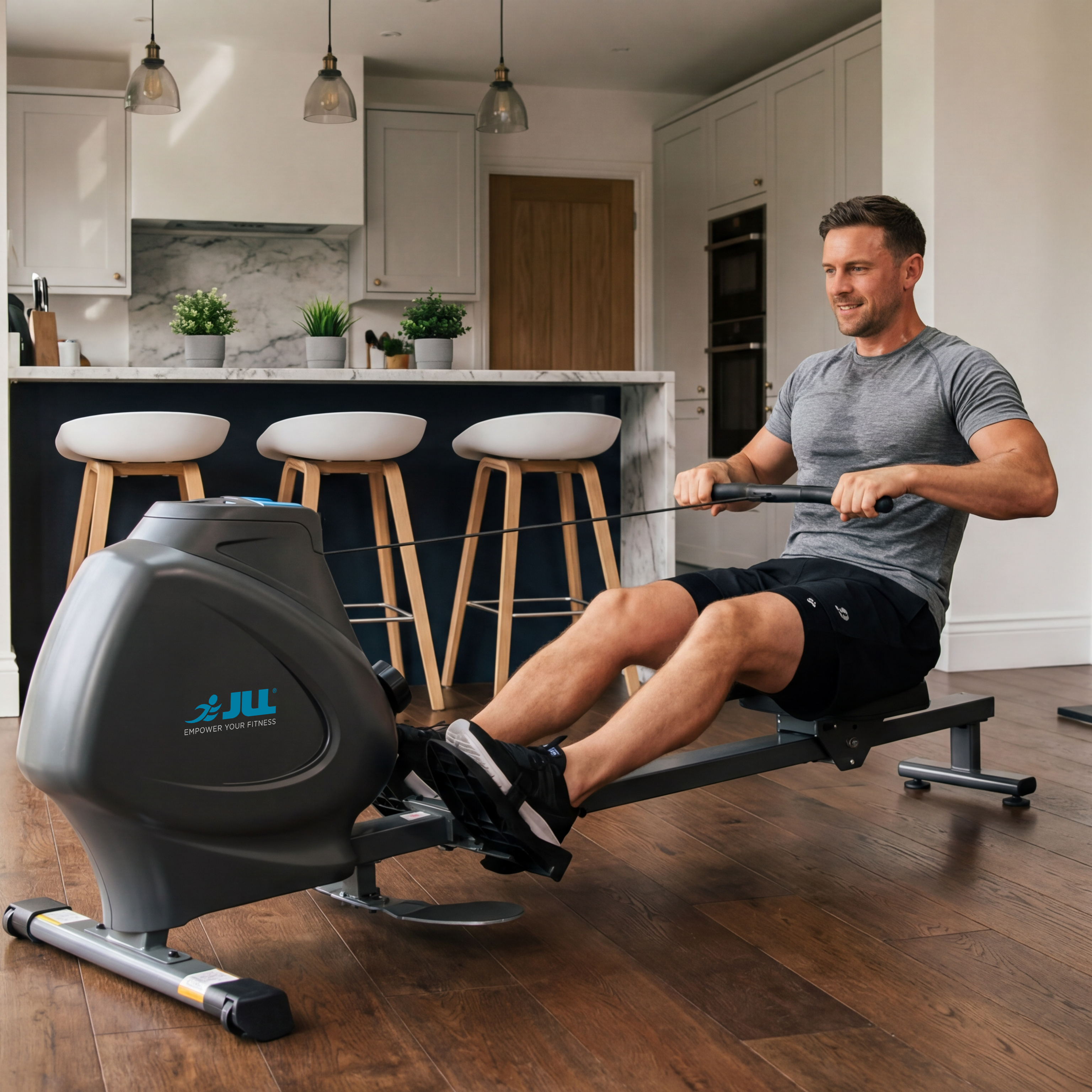
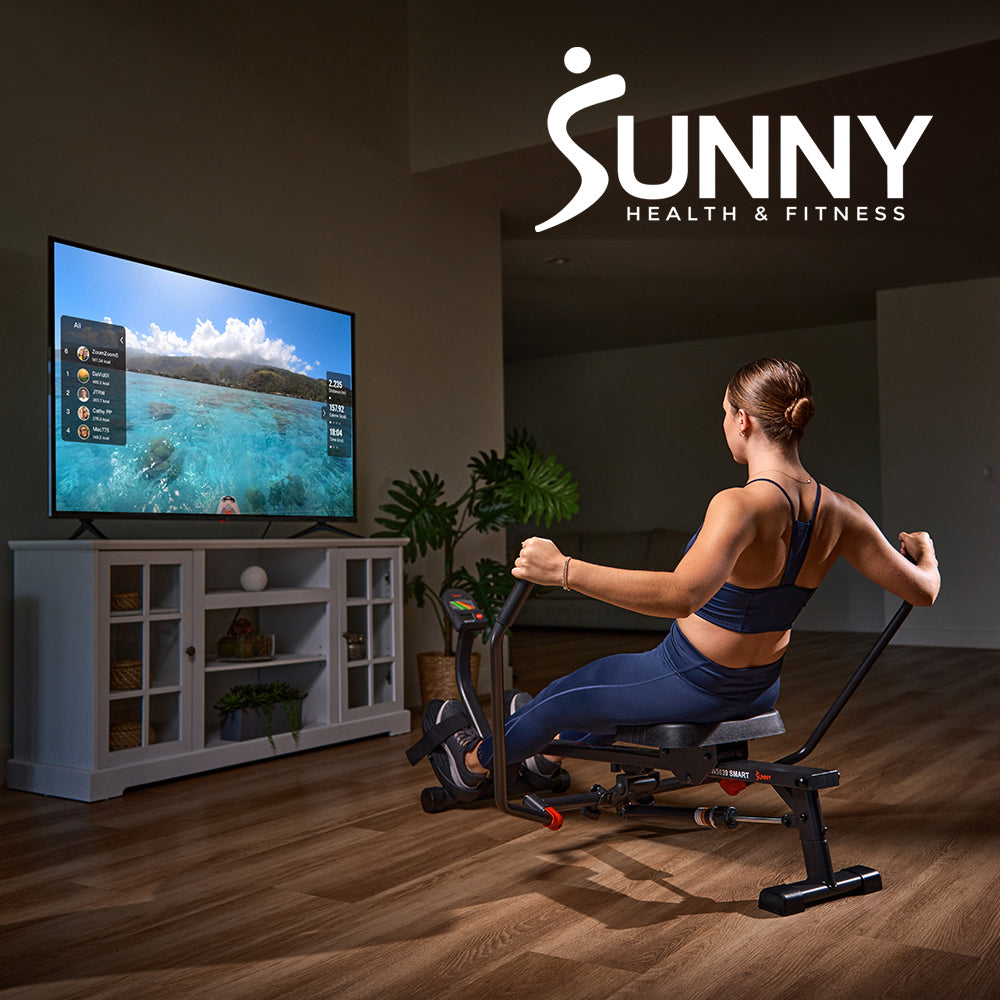
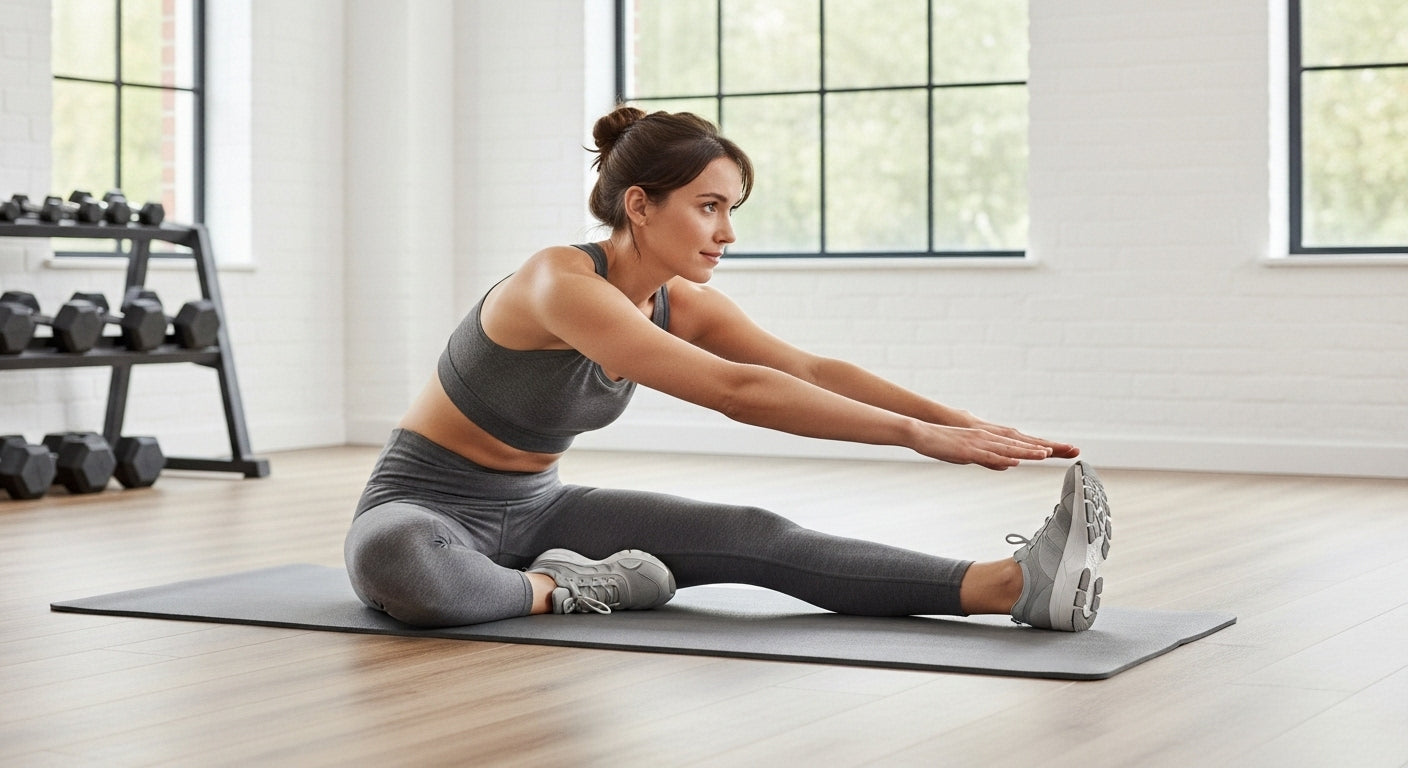

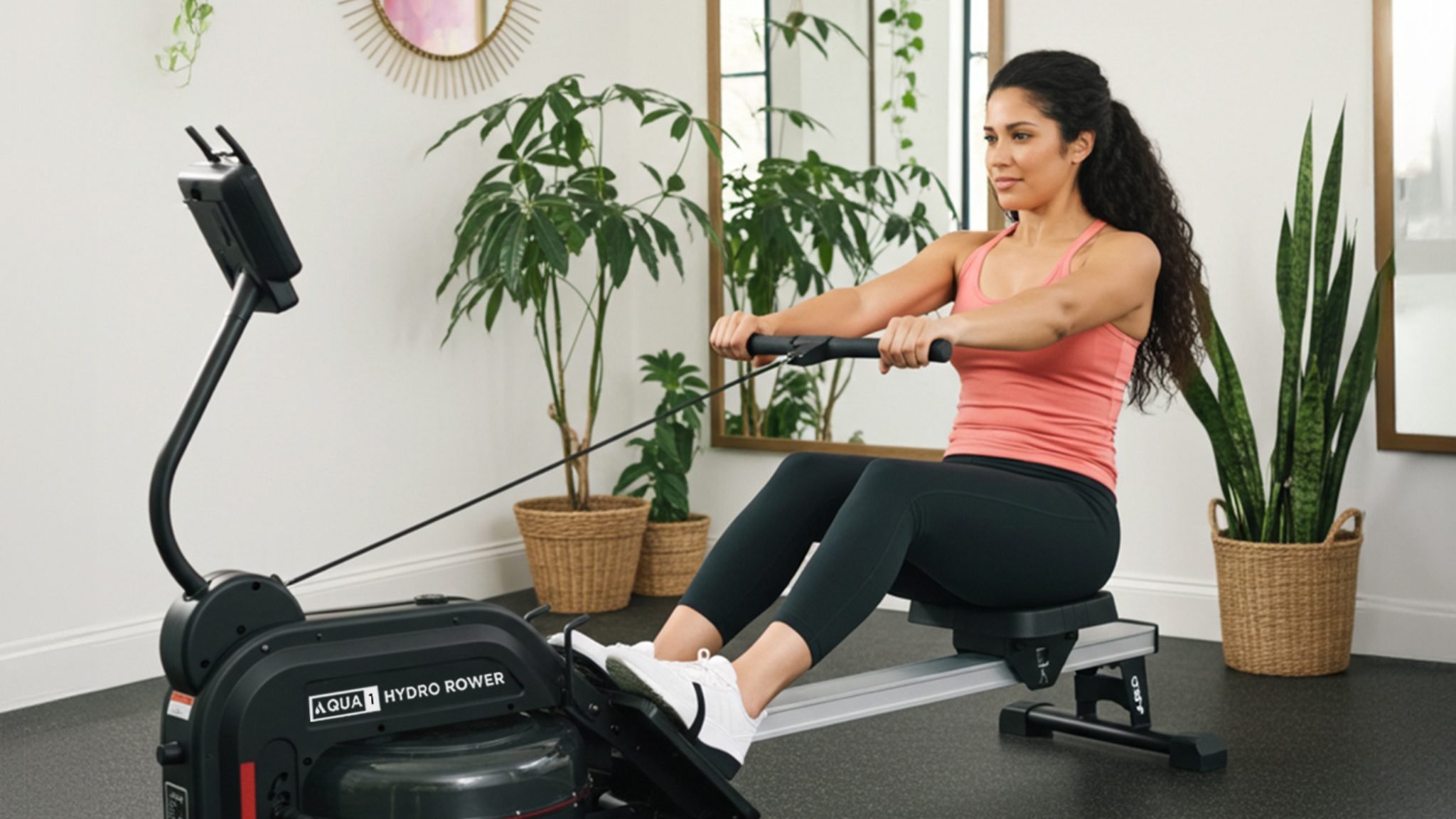
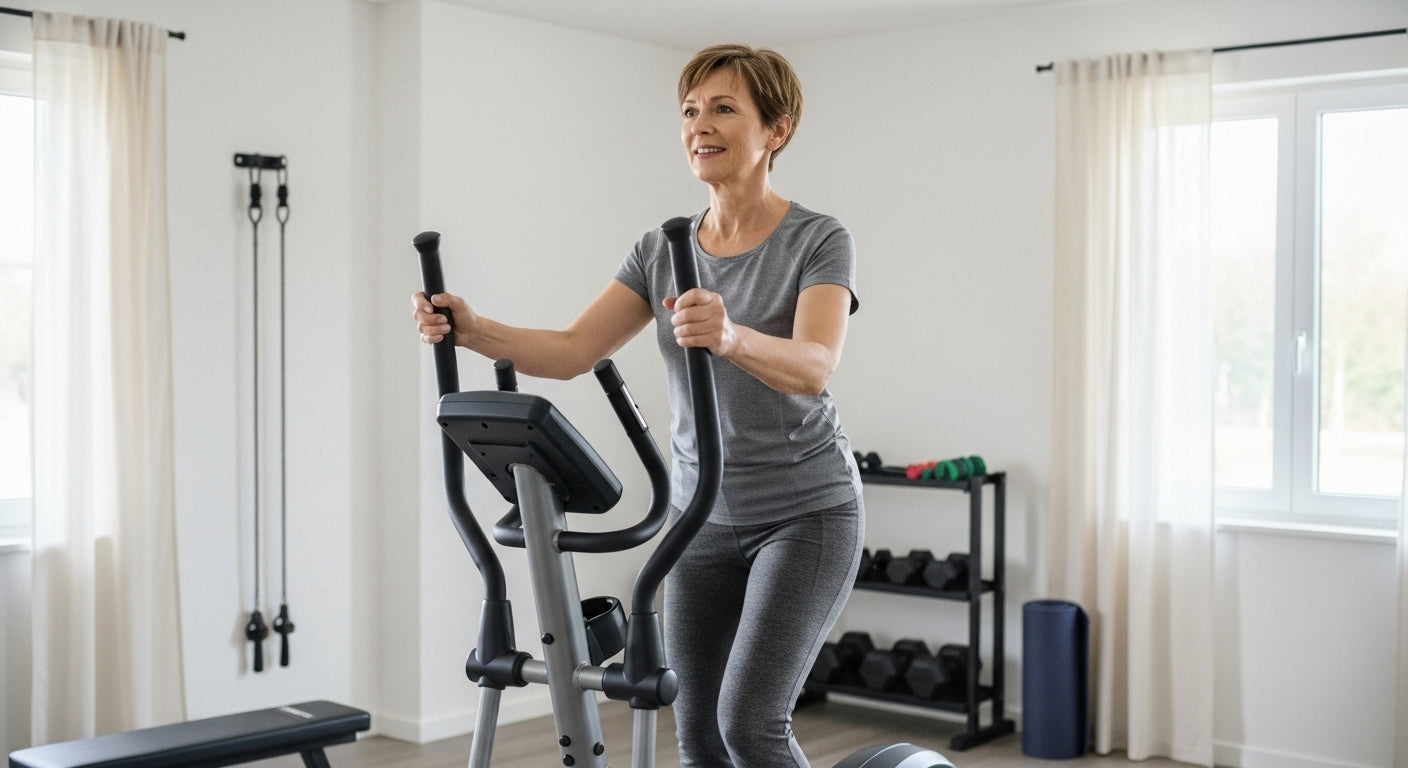



Leave a comment
All comments are moderated before being published.
This site is protected by hCaptcha and the hCaptcha Privacy Policy and Terms of Service apply.